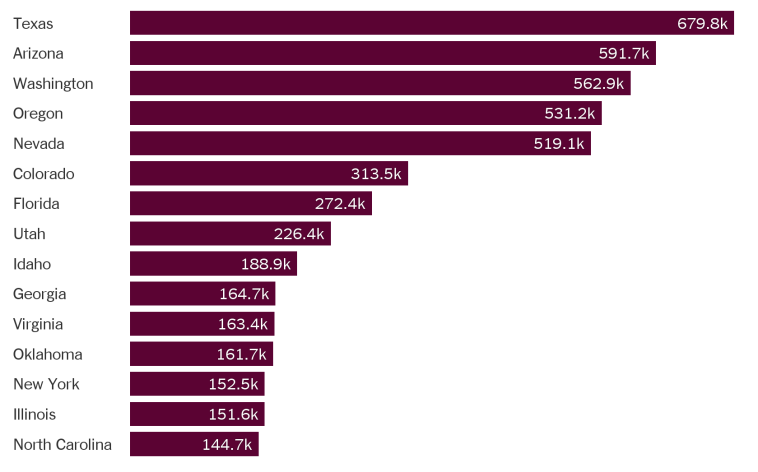Perched on the edge of the Pacific, Donald Trump lauded the unmatched beauty of his California golf course in Rancho Palos Verdes. Yet, in stark contrast, he depicted the golden state as being eroded by unchecked crime, surging homelessness, and illegal immigration, resulting in residents fleeing en masse. He presented these remarks during a recent press release, offering a blunt critique of California’s current administration.
The former president spared no effort in attributing the deterioration of San Francisco’s charm to its political leadership, specifically pointing fingers at Governor Gavin Newsom and Vice President Kamala Harris. He remarked on a perceived dramatic spike in murders and an astronomical increase in car thefts during Harris’s tenure as the state’s attorney general.
In his castigation, Trump insisted that, as attorney general, Harris demonstrated notable leniency in executing her duties. He questioned her commitment to law enforcement, stating her tacit support for movements that pushed for defunding the police, and emphasizing that not much endorsement was reciprocated by the police force towards her.
A closer review of crime data reveals an oscillation in homicide rates while Harris presided as California attorney general from 2011 to 2017. The annual homicide rates, as reported by the state Department of Justice, balanced out to an average of 1,819 homicides, a figure that starkly contrasts with much higher rates seen in the 1990s.
The statistics reflect a similar trend in vehicle thefts, which waxed and waned over those years, averaging 164,000 annual incidents. For both homicide and car theft rates, recent numbers are markedly lower than the peaks witnessed in the previous decade.
Even with these facts that appear to counter Trump’s coveted narrative of Harris showcasing a lenient approach towards crime, his fervor remained unwavered. He pointedly criticized her stance on law and order, specifically regarding ‘sanctuary cities’ for undocumented immigrants during her term as San Francisco’s district attorney.
In his accusations, Trump claimed that Harris delivered conspicuous protection for illegal immigrants who were involved in criminal activities, including murder. Further, he alleged she failed to take adequate measures towards their deportation, raising questions about her commitment to law enforcement.
Unsurprisingly, Trump didn’t shy away from discussing the homeless issue plaguing the state. While homelessness has increased in California, it has not been as dramatic as Trump emphasized. Federal reports suggest a 30.5% growth in homelessness from 2007 to 2023.
Meanwhile, San Francisco seems to demonstrate promising signs, with the count of homeless individuals this year falling to levels not seen since 2015. However, statewide, a concerning increase of 8% in homelessness from 2022 was noted from recent data, underscoring that the situation is hardly under control.
No critique of California’s conditions under the current administration could be complete without mention of the massive outflow of people from the state. Census Bureau records underline the magnitude of this exodus, with 75,423 individuals leaving the Golden State last year, topping all other states.
Trump’s critique of California’s leadership and its policies, particularly those enacted under Harris’s supervision, offer a disparaging assessment of the state’s law and order situation, and the resultant quality of life. His argument suggests a beleaguered state grappling with declining public safety, encouraged by a lenient stance on crime.
While Trump’s criticism levels a stern indictment on the liberal policies governing California, it is crucial to emphasize the role contextual facts and data play in assessing their efficacy. Through the lens of his critique, it becomes evident that Trump’s comments underscore the broader debate on policy direction and its impacts on societal issues.
Clearly, Trump’s objection to California’s administration appears rooted in his partisan viewpoint, painting a grim landscape beleaguered by unchecked crime, illegal immigration, and surging homelessness. It serves as a stern reminder of the divisive rhetoric that characterizes our current political climate and the enduring challenges that face the golden state.


